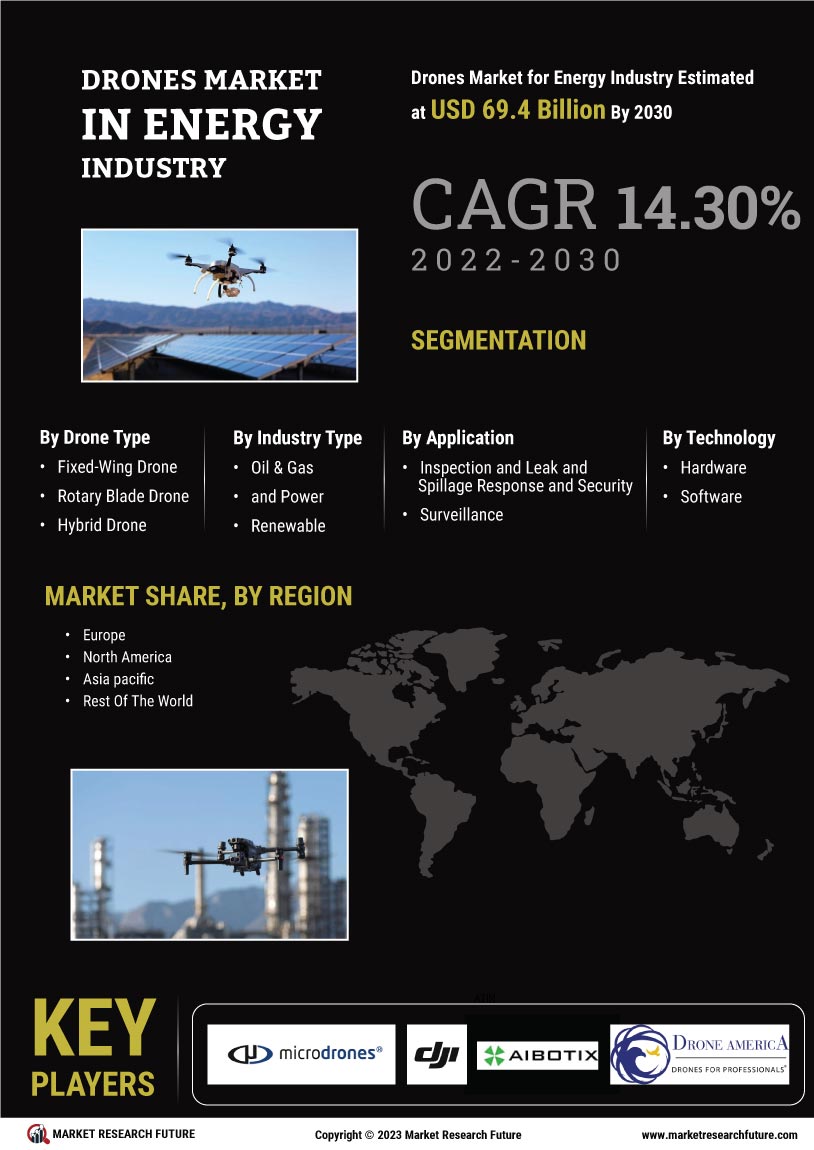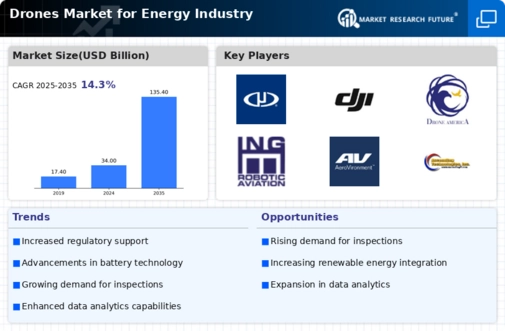Cost Efficiency
Cost efficiency is a critical driver in the Global Drones Market for Energy Industry. Drones offer a more economical alternative to traditional inspection methods, such as helicopters or manual labor, which can be costly and time-consuming. By utilizing drones, energy companies can reduce operational costs and improve safety by minimizing the need for personnel in hazardous environments. This shift towards cost-effective solutions is reflected in the market's projected growth, with an expected CAGR of 13.39% from 2025 to 2035, as companies increasingly adopt drone technology to streamline their operations.
Regulatory Support
Regulatory frameworks are increasingly supporting the integration of drones into the Global Drones Market for Energy Industry. Governments worldwide are establishing guidelines that facilitate the safe operation of drones in various energy applications, such as power line inspections and wind turbine monitoring. For example, the Federal Aviation Administration in the United States has implemented regulations that allow for expanded drone usage in commercial sectors. This regulatory support is likely to drive market growth, as companies can leverage drones for more efficient operations while adhering to safety standards.
Environmental Monitoring
The demand for environmental monitoring is propelling the Global Drones Market for Energy Industry. Drones are increasingly utilized to assess environmental impacts, monitor emissions, and ensure compliance with regulations. For instance, drones can survey oil spills or track wildlife in energy development areas, providing critical data for environmental assessments. As energy companies face growing pressure to demonstrate sustainability, the use of drones for environmental monitoring is likely to expand. This trend aligns with the market's anticipated growth, reaching 135.4 USD Billion by 2035, as companies prioritize environmental stewardship.
Market Growth Projections
The Global Drones Market for Energy Industry is projected to experience substantial growth, with forecasts indicating a rise from 34.0 USD Billion in 2024 to 135.4 USD Billion by 2035. This growth trajectory suggests a compound annual growth rate (CAGR) of 13.39% from 2025 to 2035. Such projections highlight the increasing adoption of drone technology across various energy sectors, driven by factors such as technological advancements, regulatory support, and the need for cost-effective solutions. As energy companies continue to embrace drone applications, the market is poised for significant expansion.
Data Analytics Integration
The integration of data analytics into drone operations is enhancing the value proposition of the Global Drones Market for Energy Industry. Drones equipped with sophisticated data collection tools can gather vast amounts of information, which can then be analyzed to optimize energy production and maintenance schedules. For example, predictive analytics can forecast equipment failures, allowing for proactive maintenance and reducing downtime. This capability is becoming increasingly vital as energy companies seek to maximize efficiency and minimize costs, contributing to the overall growth of the market.
Technological Advancements
The Global Drones Market for Energy Industry is experiencing rapid technological advancements that enhance operational efficiency and data collection capabilities. Innovations such as improved battery life, advanced sensors, and AI-driven analytics are transforming how energy companies conduct inspections and maintenance. For instance, drones equipped with thermal imaging can identify energy losses in solar panels, leading to more efficient energy production. As these technologies evolve, the market is projected to grow significantly, with a valuation of 34.0 USD Billion in 2024, indicating a robust demand for drone applications in the energy sector.

















Leave a Comment